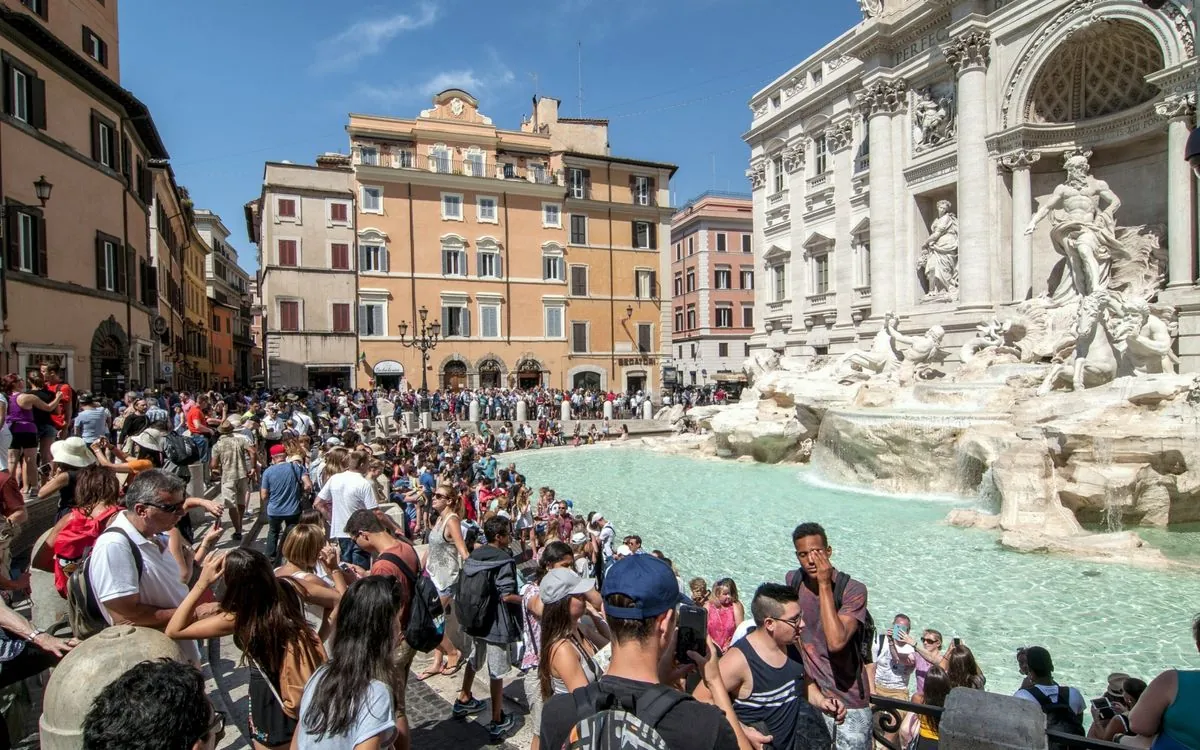Rome Mulls Trevi Fountain Access Limits Amid Tourism Surge
Rome considers restricting access to the iconic Trevi Fountain as it prepares for the 2025 Jubilee. Officials propose a reservation system and potential fees for non-residents to manage the expected influx of 32 million visitors.

Rome's authorities are contemplating measures to regulate access to the renowned Trevi Fountain, a move prompted by the anticipated surge in tourism during the upcoming 2025 Jubilee. This Roman Catholic event, scheduled to commence in approximately 15 months, is projected to draw 32 million visitors to the Italian capital.
The proposed plan involves implementing a reservation system with designated time slots and limiting the number of individuals permitted on the steps surrounding the fountain. Alessandro Onorato, Rome's tourism councillor, stated, "For Romans we are thinking of making it free, while non-residents would be asked to make a symbolic contribution, one or two euros."
Roberto Gualtieri, the mayor of Rome, acknowledged the growing challenges in managing the site, describing the situation as "technically very difficult." The city's initiative aligns with efforts in other European destinations grappling with overtourism, such as Barcelona and Venice, where an entry fee system for visitors was recently tested.
The Trevi Fountain, completed in 1762, stands as a masterpiece of late Baroque architecture. It features statues of Tritons guiding the shell chariot of Oceanus, symbolizing the taming of water. The fountain's cultural significance extends beyond its architectural beauty, as it has been immortalized in cinema, most notably in Federico Fellini's "La Dolce Vita."

Interestingly, the fountain is not just a tourist attraction but also a source of charity. An estimated €3,000 is tossed into the fountain daily, with the collected funds used to support a supermarket for Rome's underprivileged residents. This practice aligns with the fountain's name, "Trevi," derived from "tre vie" or "three ways," symbolizing the junction where it stands.
The fountain's history is as rich as its appearance. Designed by Nicola Salvi in 1732, it's supplied by the ancient Acqua Vergine aqueduct, dating back to 19 BC. The central figure, Oceanus, represents the god of all water in Greek mythology, emphasizing the fountain's theme of water mastery.
While the proposed measures aim to preserve the site, they also reflect the delicate balance between tourism and conservation. With fines of up to €500 for entering the fountain illegally, authorities are keen on protecting this historical landmark while ensuring its accessibility to visitors.
As Rome prepares for the influx of pilgrims and tourists in the coming year, the potential changes at the Trevi Fountain symbolize a broader shift in how cities manage their most popular attractions in the face of growing tourism pressures.
"The situation at the Trevi Fountain is becoming technically very difficult to manage."


































